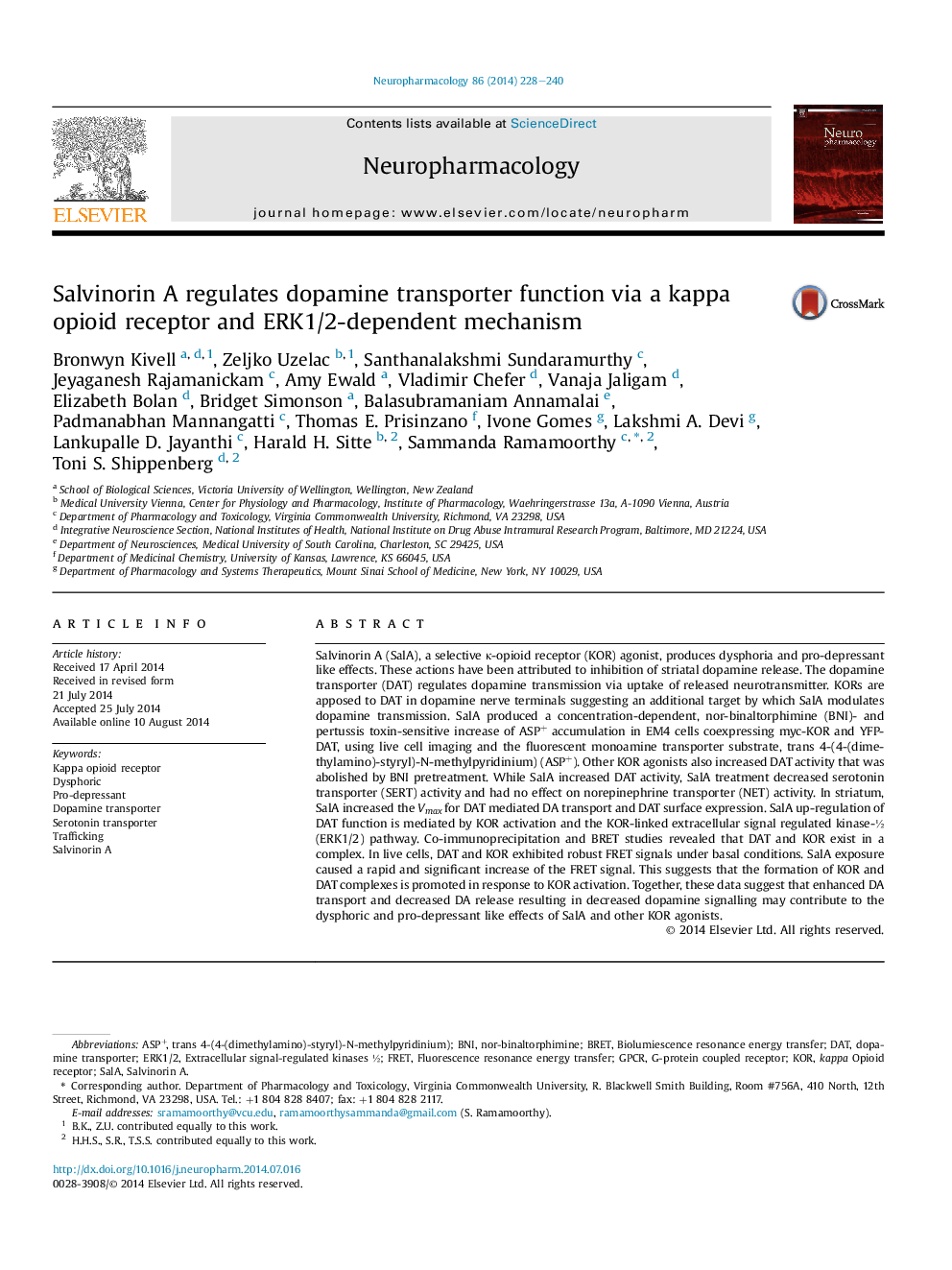| Article ID | Journal | Published Year | Pages | File Type |
|---|---|---|---|---|
| 5814199 | Neuropharmacology | 2014 | 13 Pages |
Abstract
Salvinorin A (SalA), a selective κ-opioid receptor (KOR) agonist, produces dysphoria and pro-depressant like effects. These actions have been attributed to inhibition of striatal dopamine release. The dopamine transporter (DAT) regulates dopamine transmission via uptake of released neurotransmitter. KORs are apposed to DAT in dopamine nerve terminals suggesting an additional target by which SalA modulates dopamine transmission. SalA produced a concentration-dependent, nor-binaltorphimine (BNI)- and pertussis toxin-sensitive increase of ASP+ accumulation in EM4 cells coexpressing myc-KOR and YFP-DAT, using live cell imaging and the fluorescent monoamine transporter substrate, trans 4-(4-(dimethylamino)-styryl)-N-methylpyridinium) (ASP+). Other KOR agonists also increased DAT activity that was abolished by BNI pretreatment. While SalA increased DAT activity, SalA treatment decreased serotonin transporter (SERT) activity and had no effect on norepinephrine transporter (NET) activity. In striatum, SalA increased the Vmax for DAT mediated DA transport and DAT surface expression. SalA up-regulation of DAT function is mediated by KOR activation and the KOR-linked extracellular signal regulated kinase-½ (ERK1/2) pathway. Co-immunoprecipitation and BRET studies revealed that DAT and KOR exist in a complex. In live cells, DAT and KOR exhibited robust FRET signals under basal conditions. SalA exposure caused a rapid and significant increase of the FRET signal. This suggests that the formation of KOR and DAT complexes is promoted in response to KOR activation. Together, these data suggest that enhanced DA transport and decreased DA release resulting in decreased dopamine signalling may contribute to the dysphoric and pro-depressant like effects of SalA and other KOR agonists.
Keywords
Related Topics
Life Sciences
Neuroscience
Behavioral Neuroscience
Authors
Bronwyn Kivell, Zeljko Uzelac, Santhanalakshmi Sundaramurthy, Jeyaganesh Rajamanickam, Amy Ewald, Vladimir Chefer, Vanaja Jaligam, Elizabeth Bolan, Bridget Simonson, Balasubramaniam Annamalai, Padmanabhan Mannangatti, Thomas E. Prisinzano, Ivone Gomes,
